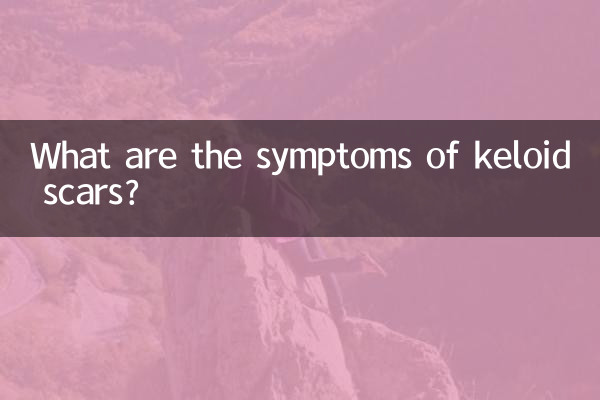What are the symptoms of keloid scars?
Keloid scars (also known as keloids or hypertrophic scars) are a common skin problem that often results from abnormal wound healing. In recent years, the treatment and care of keloid scars have become a hot topic, and many patients and medical aesthetic enthusiasts are paying attention to its symptoms and solutions. The following is a summary and structured analysis of keloid symptoms across the Internet in the past 10 days.
1. Common symptoms of keloid scars

Keloid scars are mainly characterized by local swelling and hard texture of the skin, accompanied by the following symptoms:
| symptom | Detailed description |
|---|---|
| raised lump | The scar is significantly higher than the surrounding skin and appears as nodular or flaky hyperplasia. |
| Abnormal color | It initially appears red or pink, and later may turn into dark brown or skin color. |
| itching or pain | Some patients experience itching, stinging, or burning sensations. |
| Hard texture | It feels firm to the touch and lacks the elasticity of normal skin. |
| continue to grow | It may gradually expand over time beyond the original wound. |
2. Common locations of keloid scars
Keloid scars can appear anywhere on the body, but are more common in the following areas:
| parts | incidence |
|---|---|
| Chest | High-incidence areas, especially around the sternum. |
| shoulder back | Commonly seen after acne or trauma. |
| earlobe | It is easy to form after ear piercing. |
| limb joints | Such as knees and elbows, which are prone to hyperplasia due to frequent activities. |
3. Analysis of the causes of keloid scars
The formation of keloid scars is related to many factors. The following are recent hot discussion points:
| inducement | illustrate |
|---|---|
| genetic factors | People with a family history of keloids are more likely to develop them. |
| wound infection | Infection during the healing process may lead to scarring. |
| skin tension | Areas of high tension, such as the chest, are more likely to develop. |
| Improper care | Scratching, rubbing, or premature scab removal can worsen symptoms. |
4. Recent popular treatment methods
According to discussions across the Internet in the past 10 days, the following treatment methods have attracted much attention:
| Treatment | Effect evaluation |
|---|---|
| laser treatment | It can lighten the color, but requires multiple treatments. |
| local injection | Corticosteroid injections can reduce scarring. |
| pressure therapy | It is suitable for early scars and requires long-term persistence. |
| surgical resection | The risk of recurrence is high and needs to be combined with other treatments. |
5. How to prevent keloid scars
The key to preventing keloid scars is wound care and early intervention:
1.Keep the wound clean: Avoid infection and reduce the risk of scar hyperplasia.
2.Avoid excessive pulling: Reduce local movement during healing.
3.Use silicone stickers: Early use can inhibit proliferation.
4.sun protection: Avoid ultraviolet rays for new scars to prevent pigmentation.
Summarize
Symptoms of keloid scars are diverse and can have an impact on a patient's quality of life. You can better cope with this problem by understanding its symptoms, triggers, and treatments. Recent advances in laser and injectable treatments have given patients more options, but prevention and early care remain key. If you have relevant symptoms, it is recommended to consult a professional doctor in time.

check the details

check the details